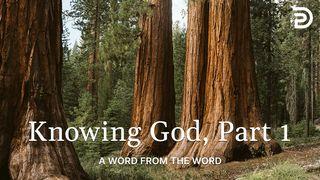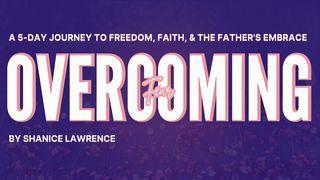Delve Into The ProphetsSample

DAY 15 – JEREMIAH PART II
The book of Jeremiah contains his poetic oracles and prose sermons, as well as autobiographical narratives of his experiences during the last years of the Judean kingdom and the beginning of its exile. These materials aren’t ordered chronologically or thematically. Instead, they’re intricately grouped by catchwords and other associations.
For example, in one episode, Jeremiah visits a potter, and then shortly afterwards he smashes a pottery jar. Pashhur the son of Immer arrests Jeremiah, and then a different Pashhur, the son of Malkijah, comes from the king to ask his advice. Prayers of Jeremiah that express his inner anguish are placed inside each of these pairs of episodes. In this way, the very form of the book illustrates how Jeremiah experienced external conflict with those who resisted his message and internal conflict as he struggled to bring that message in the face of their opposition. This entire section is bracketed by oracles that Jeremiah delivered at the city gates to the kings and people of Judah who went through them. So the arrangement is:
Gates Potter Prayer Potter Pashhur Prayer Pashhur Gates
Arrangements like this represent the smallest level of organization in the book. There are also larger principles of organization. The book begins with a historical heading and ends with a historical narrative that describes the fall of Jerusalem, the event Jeremiah was best known for predicting. In between, the book is built out of basic units that are marked with a reference to the “word of the Lord” coming to the prophet under particular circumstances. Jeremiah’s trip to the potter and his visit from Pashhur son of Malkijah are examples of these individual units. They are gathered together into four large groups, so that the book as a whole has four main parts.
• The first part consists mostly of poetic oracles, with relatively brief prose sermons and narratives interspersed. Most of the material in it is undated. The few indications of dates show that it comes from a variety of periods, from the reign of Josiah right down to the time of Zedekiah.
• The second part of the book, by contrast, is mostly narrative. The episodes it contains typically are dated, although they aren’t in chronological order. They come from the reigns of Jehoiakim and Zedekiah.
• The third part of the book consists of narrative episodes that are in chronological order. These describe the last days of the Judean kingdom and the flight of the remnant into Egypt.
• The fourth and final large part of the book contains poetic oracles that Jeremiah spoke against the surrounding nations over a period of many years. This section culminates in an oracle against Babylon.
Significantly, near the end of each of these four parts there’s a reference to Jeremiah’s words being written down in a book or on a scroll.
There’s another large organizing principle in the book of Jeremiah as well. It has been created through some rearranging of its contents. Even though the oracles against the nations now constitute the fourth part of the book, the introduction to these oracles comes right after the first part. This suggests that the oracles originally came earlier in the book, but have since been moved to the end. (They appear in this earlier location in the Septuagint, an ancient Greek translation of the First Testament.) In addition, a long poetic oracle has been inserted in the middle of what is now the second part of the book, which is otherwise mostly narrative. The result of this creative rearrangement is a book in which Jeremiah’s poetic oracles appear at the beginning, middle, and end. This highlights their importance. The central location of the middle oracle, which promises a new covenant (and which also begins with a description of Jeremiah’s words being written down), shows that it’s the most important of all.
While the book of Jeremiah carries us back and forth in place and time, its themes nevertheless remain constant. Like his predecessors, Jeremiah warns the people of his day that God will judge them like any other nation for their injustice and immorality. Even though they’re lavishing worship on God, and even though his temple is in their midst, and even though he miraculously delivered them from the Assyrians in the past, none of these things should make them complacent. Their only hope is to change their ways. Unfortunately, they don’t change, and they are conquered and exiled. But like his predecessors, Jeremiah also explains in advance that God’s purpose even in this judgment isn’t to punish but to correct. He promises that God will bring the people back to their land once this purpose has been accomplished. Unlike his predecessors, however, Jeremiah also gives us an intimate look into his own heart and into his relationship with God as he brings words to his fellow Judeans and they reject and even conspire to kill him. His questions, his protests, and his anguish pour forth – and God frequently replies – as he faithfully fulfills the mission God has given him.
PRAYER: Let me understand and know You, Lord. You who exercises kindness, justice and righteousness on earth.
Scripture
About this Plan

The Old Testament of the Bible is broken into three major sections, the second of which is known as the Prophets. If you didn’t know that, imagine all of the other interesting things you’ll learn in this reading plan as you explore the purpose, context, and background of this fascinating and unique part of God’s Word.
More
We would like to thank Biblica for providing this plan. For more information, please visit: http://www.biblica.com
Related Plans

The Generosity Practice

An Encounter With Jesus

Imposter Syndrome: You Are Who God Says You Are

A Word From the Word - Knowing God, Part 1

Ruth: A Redeemer Who Fills All Emptiness | Video Devotional

Grace for Your Pace - How to Burn on Instead of Burn Out

Parenting Through God’s Lens: Seeing Your Child the Way God Does

From Need to Maturity

Rest for the Soul: 8 Days With Jesus
